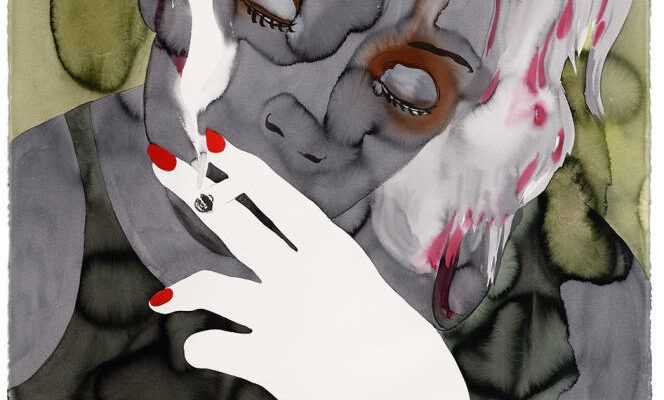It is one of the pride of France, after champagne and the French touch: France is the third producer of animated series behind the United States and Japan. This “Art without a star, without glitter or red carpet”, as Emmanuel-Alain Raynal, founder of the production company Miyu, nicely sums it up, has long since ceased to be reserved for young audiences.
It also goes beyond the strict framework of entertainment cinema, towards the visual arts. From little jewels of black humor in plasticine by Swedes Nathalie Djurberg and Hans Berg to computer-generated images by Briton Ed Atkins, through the slender simplicity of Massinissa Selmani, plastic surgeons readily seize on this language conducive to reverie. like satire.
Subversive power
For Françoise Pétrovitch, who is exhibiting her film this fall Echo, gorged with tears and fears, at the Hélène and Edouard Leclerc Fund, in Landerneau (Finistère), “Animation is a refuge allowing to escape reality”.
His colleague Christine Rebet sees it rather as a way of telling the world. If the former scenographer wanted “Put the ink in motion”, it is to tell dramas. Under the cover of small dreamlike and light tales of a few minutes, his films, currently screened at the Museum of Contemporary Art in Lyon, explore the dark gaps in history, like the blind spots of our psyches.
The South African William Kentridge, whose first films were first acclaimed at the Annecy International Animated Film Festival before being dubbed by museums, has long understood the subversive power of animation. Thus he found more subtle to translate by effects of appearance and erasure, rather than by documentary video, the violence and the ambiguity of his country, so quick to amnesia.
To summon up the memory of slavery, the African-American Kara Walker also resorted to animation, not without irony appropriating the primitive techniques of shadow theater, a practice long considered a “leisure activity”. Whites ”.
“Animation is a cinema of constraint, but also possibilities in narrative terms: you can tell everything… or nothing. »Emmanuel-Alain Raynal, founder of the production company Miyu
According to curator and broker Laurence Dreyfus, who in 2007 orchestrated the “Momentary Momentum” exhibition on the junction between art and animation at the Parasol Unit art center in London, “ the starting point of the craze for animation comes from video games, which generated software with which the artists were familiar from the start ”. The youngest know it too, the moving image catches the eye – and the mind – more than the fixed image.
The boom in NFTs (non-fungible tokens, in French) is also no stranger to the growing interest of plastic surgeons in animation. These lines of code that refer to a certificate recorded in the blockchain panic collectors all the more when they refer to animated scenes.
Emmanuel-Alain Raynal also has his little idea about the attraction for this artistic form: “Animation is at the crossroads of artistic expressions, it is a total art, plastic, literary, cinematographic, it is a cinema of constraint, but also possibilities in narrative terms: we can tell everything… or nothing. “
To promote the personal creations of the most inventive authors in the animation world, Miyu will open a gallery in rue du Temple at the end of 2021, a stone’s throw from the Center Pompidou. A bridge between two worlds that never stop loving each other.
“Five years after the war”, a short film produced by Miyu
Christine Rebet, “Escapologie”, until January 2, MAC Lyon.
Françoise Pétrovitch, fall 2021, Hélène and Edouard Leclerc Fund.
Miyu Gallery, opening winter 2021.
